Why Does My Dog Paw at My Face? (Explained)
Dogs do all kinds of strange things that we may not understand from our perspective. The way humans communicate with each other is predominantly verbal. If we need something from someone, all we have to do is ask. If we’re uncomfortable or in pain, we can just tell the doctor what’s wrong and they can give us the right treatment.
Since we started sharing our homes with dogs, they have been finding more and more ways to communicate with us. If you compare a dog to their wolf-like ancestors, the way in which they communicate has changed substantially.
For example, wolves don’t bark all that often. A wolf pup will bark initially to get its mother’s attention but as an adult, a wolf’s vocal communication is usually limited to growling, whining, and howling.
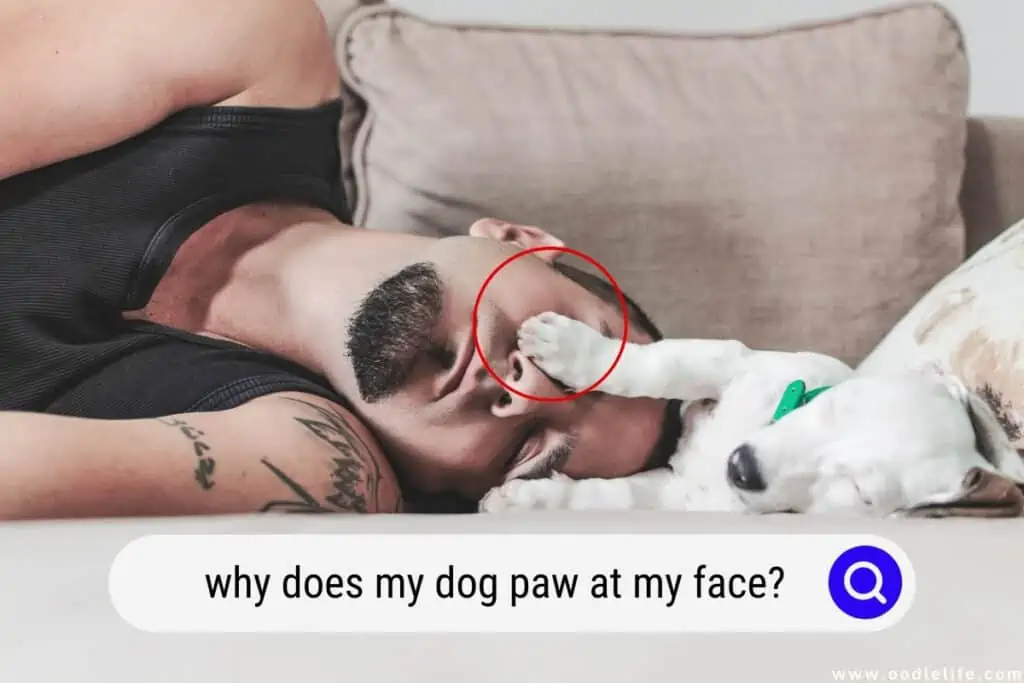
When we compare dogs to wolves, we tend to compare their communication methods to that of a puppy. When breeding from the wolf, humans would have selected the most docile, human-friendly, and responsive wolves. Through generations of breeding dogs remain more puppy-like throughout their lives instead of growing into self-sufficient adult wolves who can fend for themselves. As a result, many of their communication methods are very puppy-like. Pawing is one of those communications methods that a pup would have done with the adults in the pack which dogs have continued to do.
So we know your dog is trying to communicate with you when they paw at you but what are they trying to say?
Attention Seeking Behaviour
After spending hundreds of years breeding dogs to want to be around humans, we really shouldn’t be surprised when our beloved pets want our attention all the time. After all, they rely on us for their food, water, exercise, comfort needs, and everything else under the sun!
We have taken the place of any pack their ancestors would have had so of course, they’re going to come to us whenever they get bored. Attention-seeking behaviour is any behaviour your dog performs that doesn’t have any purpose other than to gain a reaction from you. It can be because your dog is under stimulated or even just because they’re in their adolescence.
No matter how well you train your cute puppy to sit and wait for attention or leave you when you’re busy, they are very likely to regress during their adolescence and push boundaries. You may have to go back to square one and work on their manners again!
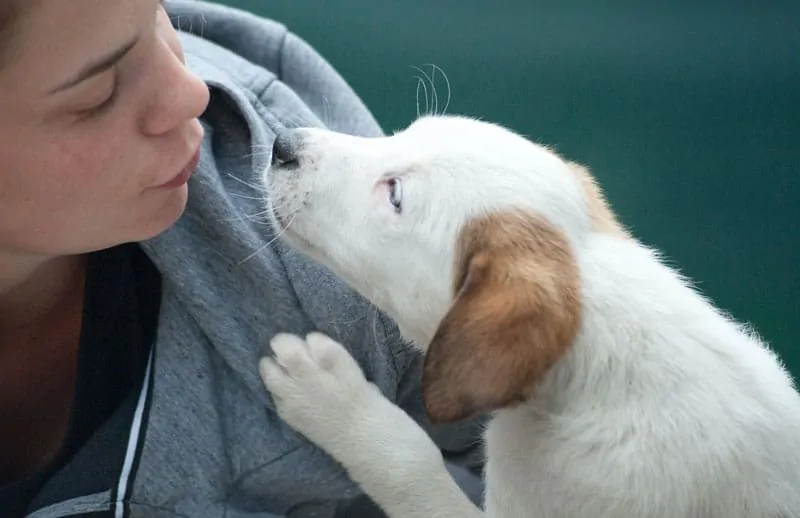
They Need Something
Your dog isn’t capable of coming into the room while you’re doing something else and explaining politely that they need something. Instead of asking for something, sometimes the best they can do is smack us in the face with a paw and hope for the best.
Some dogs might be smart enough to carry their food bowl to you if they think it’s time for dinner. Others might wait by the place where you store their food but in their defense, which method will work faster? Quietly sitting somewhere you can’t even see them or doing something that makes it impossible to ignore them.
Before you write off their behaviour as just another nuisance, you should make sure they’re not actually in need of something like food, water, or the toilet.
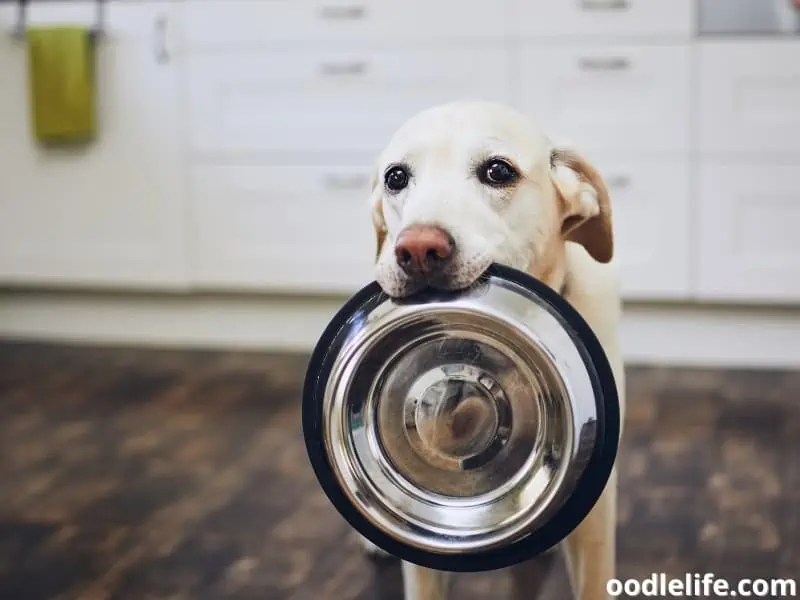
They Want Comforting
Just because your dog is pawing at you for attention makes the behaviour inherently attention seeking but there is sometimes a very good reason for that. Sometimes they’re just looking for emotional support from their caretaker – you.
A couple of decades ago before we had all of the up to date research on dog behaviour and training, we were always told not to comfort our dogs.
It was thought that if we comforted dogs while they were worried we were reinforcing the behaviour. More recently, dogs have been found to have emotional complexity similar to our own. If you didn’t comfort your dog when they were feeling anxious, it would be just like you not being comforted when you were feeling upset or worried by something.
How would you feel if you came home upset and everyone in your family simply ignored you?
Dogs need comforting, if they’re pawing at your face there could be a very good reason for it. Comforting your dog does not reinforce the emotion behind the behaviour but it does mean that you should do some digging to find out what made your dog anxious.
To help them with this and get a few less paws to the face, finding out what makes them anxious and building their confidence with it would help reduce the behaviour.
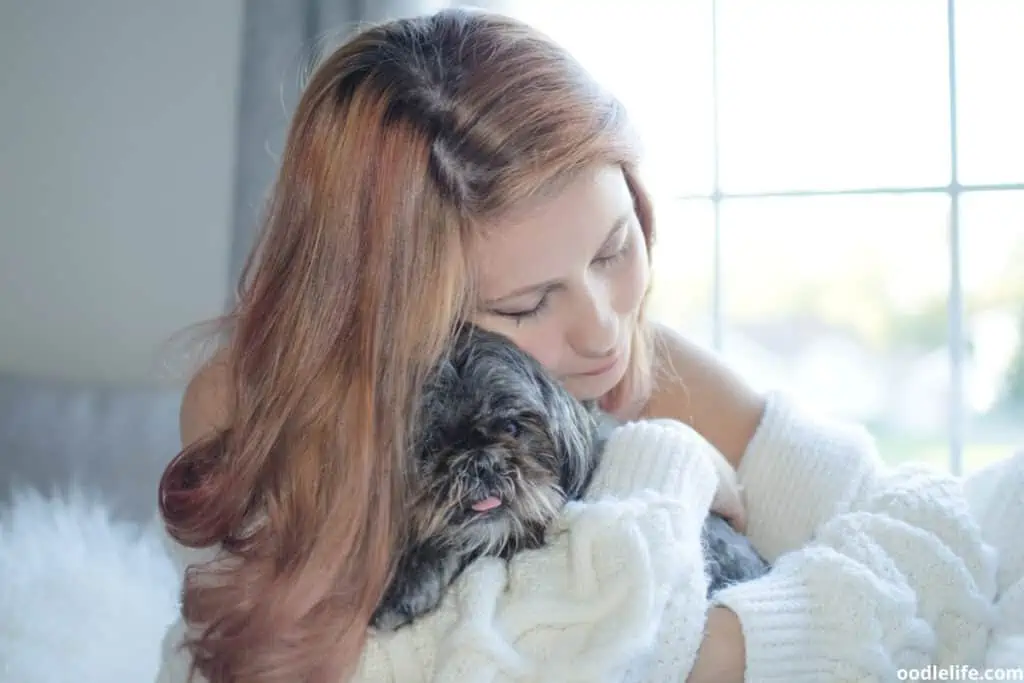
The Behaviour Has Been Reinforced
Whatever the reason for your dog pawing you in the face, there’s a reason why they become repeat offenders, it works. Dogs are smart animals, they work out what works to get them what they want and they repeat that successful behaviour. They are also very capable of working out what doesn’t work for them and trying new things.
If your dog started out by nudging at you or pawing at your leg for attention but you’ve been ignoring it to avoid them repeating the behaviour, they’re going to try something new. Unfortunately for us, having a paw in your face is a lot harder to ignore!
For a behaviour to be reinforced, it doesn’t mean that they’ve achieved exactly what they wanted from performing it. Even if we tell them to get down or move them away, that verbal or tactile response in itself can be rewarding to them.
Dogs love our attention, even if it’s not totally positive, all attention is sometimes good attention.
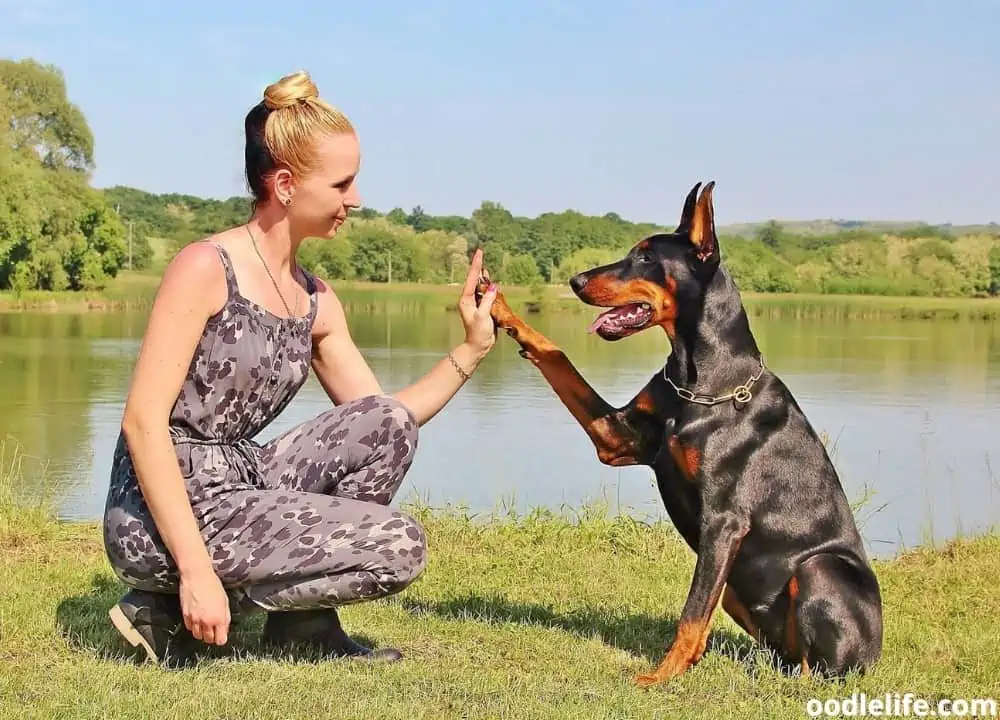
Dominance Theory
Animal behaviourist Rudolph Schenkel introduced us to dominance theory in the 1930’s. His studies were based on captive wolves but years later, Schenkel pivoted his career and spent the rest of it helping to debunk the theory he created.
Schenkel’s study on domestic wolves has since been proven to be inaccurate for dogs and wolves alike. The environment for the study was not reliable or true to their species and so the results he got were not scientifically valid.
Where dogs are concerned, more recent studies have disproven dominance theory. Our dogs are not master manipulators trying to control us or set out a pack hierarchy. If they’re doing something we perceive as dominance, they’re usually just trying their luck and performing a behaviour that has previously worked for them.
Dogs jump up to get our attention and they steal the sofa or your bed because it’s comfortable, not because they’re trying to take over your home!
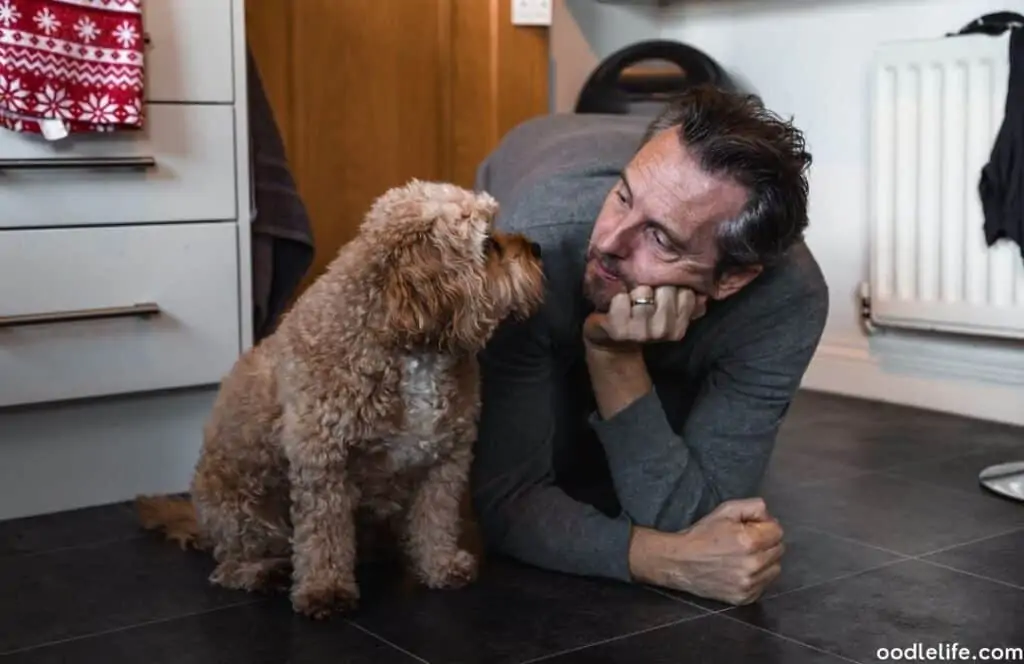
How To Train Them To Stop ?
While your dog means no harm, a paw to the face isn’t ideal. You can find yourself getting scratched or having a mug of coffee knocked out of your hand. To stop a dog doing any behaviour we find inappropriate, you need to put in place a mixture of management and training to overcome it.
If your dog only paws at you in specific situations like when you’re trying to eat your food, simply giving them some fun enrichment like a Kong or a chew in another room will prevent them practicing the behaviour without much effort on your part.
Simply preventing the situations where your dog performs an unwanted behaviour so they’re not practicing it can sometimes fix the issue altogether.
Alternatively, making sure the behaviour doesn’t achieve anything is the next thing to try. Ideally you would ignore the behaviour but getting slapped by a paw in the face is understandably hard to overlook.
You can instead teach them to do something incompatible with the problem behaviour to help them overcome it. If you train your dog that offering a calm sit with all four paws on the floor gets them a tasty treat as a reward, repeating this will eventually give them a go to behaviour to perform when they want anything from you. To proof this behaviour you can eventually reward a sit with four paws on the floor with attention and lots of praise.
Train them to do this in different environments and contexts to help them learn that the behaviour will work in any situation and eventually, you replace their go to paw in the face with a very polite sit and wait.
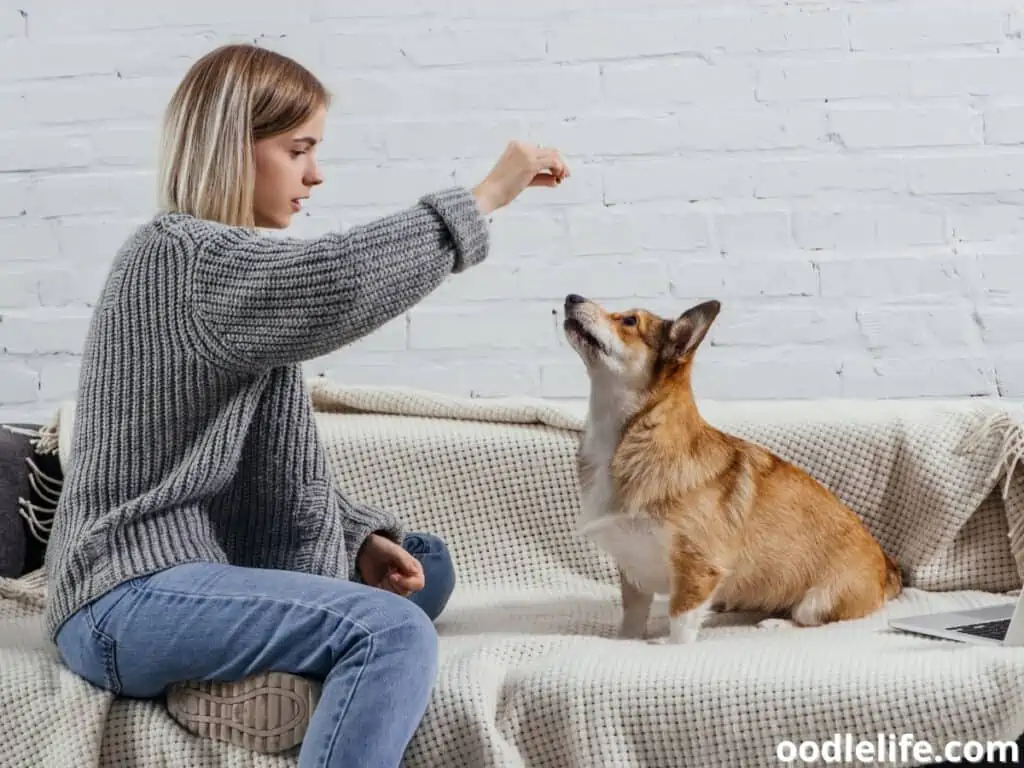
Conclusion
With the above information hopefully you’ll be comforted that your dog isn’t quietly plotting to take over the world by controlling your home to start with. They’re simply demanding your attention in a less than polite way. Since dogs don’t speak our language, they’re not aware that putting their paws in your face is not a desirable behaviour.
How many times have you touched your dog’s face? We do it every day when we pet them so why would they not be fully convinced that it’s a very acceptable thing to do?
Sometimes a paw to the face can be an indication that we have some extra work to do. It can be the tip of the iceberg in that we should treat the underlying issue to help with any anxiety. Otherwise we just need to teach them a behaviour we prefer to receive when asking for something so we can live without the risk of getting slapped by our dogs every day!